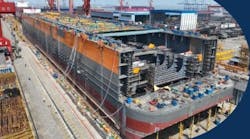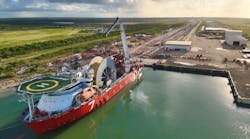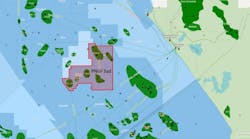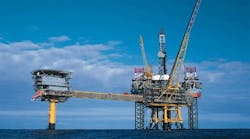Offshore staff
LONDON -- Infield Systems has published a new report on prospects for the offshore Arctic oil and gas sector through 2017. It analyzes market drivers and constraints, technological, vessel, and drilling rig requirements for the region, and forecasts capital expenditure per sector.
The report encompasses current and future offshore oil and gas developments within the Arctic Circle, and developments in the `sub-arctic’ regions of Sakhalin Island, the Jeanne D’Arc basin offshore Eastern Canada, and the Cook Inlet in Alaska.
Infield has identified over 130 Bboe in discovered oil, gas, and condensate reserves in throughout the offshore Arctic/sub-arctic regions. Around 114 Bboe, or 86% of the total, are gas reserves, with around 16 Bbbl of oil.
Roughly 99 Bboe lies in discovered natural gas fields in the Russian offshore Arctic region (not including the Sakhalin Island area).
Infield counts 147 discovered fields, of which only 25 currently produce, with a further 13 fields either with a firm plan or under development. Most of the fields (101) are classified as “possible” developments, and many are unlikely to be developed until the longer term.
But capital expenditure in the arctic region should increase steadily throughout this decade, Infield claims, rising at over $7 billion annually through 2017. Russia, with its large reserves, should largely drive this expenditure, especially during 2013-2015 (assuming the Shtokman project goes ahead in the Barents Sea).
At present, Shtokman, with reserves of over 24 Bboe, is due onstream in 2016. Further development of Sakhalin Island and other projects in the area should also consume a large share of Russia’s capex.
Canada may experience a sustained rise in expenditure after 2013, Infield adds, particularly offshore Newfoundland, with the possibility of some (currently speculative) projects to come on smaller fields in the Canadian arctic islands.
Other areas of sustained expenditure are the Snøhvit and Goliat fields in the Norwegian sector of the Barents Sea. Off Greenland and Alaska, the focus likely will remain more on exploration.
03/15/2011




